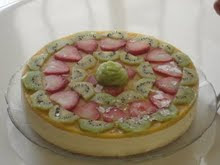
Who would have imagined that those irritating little labels stuck on fruit would provide helpful information? Their purpose isn't, of course, to help the public. Nonetheless, the codes identify whether fruit is full of pesticides and grown with petroleum-based fertilizers or organic, and even when it's genetically modified.
When those stickies first started appearing on fruit, it seemed a tad strange. As if the supermarkets were determined to add another level of frustration to already-stressed lives. The aggravation of pulling a label off a perfect fruit, the embodiment of nature's bounty, only to have part of the peel come off too was... well, infuriating. And the fact that there was yet another code designed not to enlighten, but to obfuscate, to keep information from us simply added insult to injury.
Still, those disgustingly wasteful labels that end up in the landfills and take up your precious time to peel off do more than speed up the checkout process in the supermarket. They can help you avoid eating chemicals and genetically modified organisms.
The Labeling System
The codes are applied not only to fruit, but also to vegetables, herbs, and nuts, though labels are normally stuck only on fruit. They consist of four or five numbers. The system is quite simple. Fruit is divided into three classes: conventional, organic, and genetically modified.
All four-digit coded fruit is conventionally raised. So, if you don't see five digits, then it's safe to assume that the fruit is contaminated with pesticides and petroleum-based fertilizers, and is grown in depleted soils.
Five digit codes are simply the four digits with a single number added to the front: 8 or 9.
If the first of five numbers is 9, then it has been grown to the standards defined by the National Organic Standards Board. This is obviously preferable to conventionally-grown fruit.
If the first of five numbers is 8, the fruit is genetically modified. It means that it has been grown conventionally with poisons in depleted soil, from frankenseeds.
For example, let's take a simple Valencia orange. Its code is 4014. 84014 is the code of a small genetically modified Valencia orange. 94014 is the code of a small organic Valencia orange.
* 4 digits: The fruit likely comes with a burden of poisons and was grown in depleted soil.
* 5 digits, first is 8: This fruit is genetically modified, a GMO. It contains genes that were not put there by nature.
* 5 digits, first is 9: This fruit has been grown to an organic standard. Although the standard is not as strict as some produced by the most serious organic farmers, it is certainly superior to conventionally-grown or GMO fruit.
Who's Behind PLU Codes
It all started back in 1949. The Produce Marketing Association (PMA) was founded for the purpose of taking advantage of new packaging technologies and the developing style of self-service grocery shopping to promote the produce business. Since then, agribusiness has taken over most farming and PMA has grown accordingly. It has become the focal point of coordination in large-scale national and international produce marketing.
The International Federation for Produce Standards (IFPS) is associated with PMA. It assigns and administers Price Look Up (PLU) codes -- those numbers on sticky labels -- and keeps a database of them.
Originally intended to speed checkout in supermarkets, PLU codes are now being pushed as a means to provide quality accountability and to limit the costs involved in tracing bad products that have already been distributed.
More Info From PLU Numbers
If you're interested in finding out more about PLU numbers, simply go to the IFPS website, which provides the PLU database online (http://plucodes.com/search_wizard.aspx?s=1)
You must fill in four fields, but the information requested is not personal and cannot identify you. From there, you can find out what codes are used for particular types of produce and information associated with any code. Do not look for the first digit (8 or 9) of a five-digit code. Only four digits are included. (Keep in mind that the 8 or 9 is merely tacked onto the front of a four-digit code.)
For example, if you pick up an avocado with the code 4221 on it, you could look it up and find that it's classed as a small avocado that was grown in the eastern part of north America.
Every Little Bit Helps
Information available from PLU codes isn't as complete as shoppers should have. Nonetheless, it's nice to know that a tool intended only to provide information beneficial to agribusiness and supermarkets provides a real benefit to everyday consumers.
Remember: If the code is five digits in length, check out that first digit carefully. If it's an 8, put it back -- and consider making a complaint to the supermarket for stocking it.











No comments:
Post a Comment